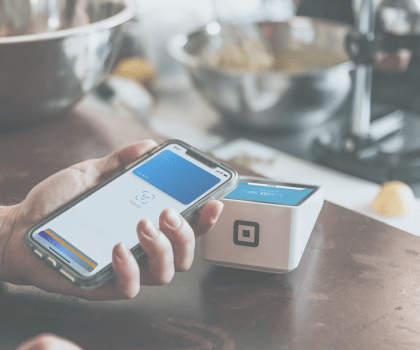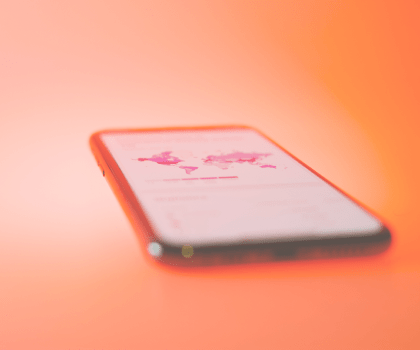Our client is a well-known name in oil & mining industry from Calgary, Canada. The client had ventured into providing software solutions for education sector, which included web, Android, and iPhone-based educational apps.
The client was very ambitious about the new technologies for different Industries and was targeting to expand the business for the global market.
Product Overview
The product includes educational apps developed for Web, iPhone and Android platforms. The application has users in different roles as Admin, Expert/Corporate Expert, Public User/Corporate User and Moderator.
- The base of the product is to eliminate the communication gap between ordinary people and influencers and make a better living. The App helps people meet influencers in their life and giving the chance to influencers to know better regarding people’s opinions.
- Localization testing is a testing process to validate whether the application is capable enough for use in a particular location or country. It is also called as “L10N“ because there are 10 characters in between L & N.
Product Challenges
Client’s requirement was an application in English, Arabic, French, Russian and other languages in Web, iPhone and Android platforms.
Language Text Directions
- Unversed with French, Arabic, Russian and other languages, characters, Keypads, sorting rules, buttons, etc.
- Support for special characters like £, ¥, €, Ö, Ä, Ñ, À, Ä, Ã, Å, Æ, etc.
Directions: All of the languages are not written in the same direction as Urdu and Arabic languages are written from right to left instead of left to right.
Hotkeys and Shortcuts:
- Matching the words after translation of app in different languages of different countries.
Our Offerings For The Case: Localization Testing Services Edtech Testing Services

Product Solutions
Foreign and Special Characters Using Different Keyboards
- To test the application with special and foreign characters, different language keyboards were used by BugRaptors. Our team used these to input different characters of different languages in the application.
Printing and Paper Sizes
- Different countries use different paper sizes. The most commonly used paper size in the United States is “Letter”, which refers to 8½” X 11” sheets of paper.
- We worked on different size of papers to test the printing functionality of the application.
Sorting
- BugRaptors gathered different sorting rules of the languages used in the application and tested the applications sorting functionality according to those gathered rules.
- Our team approached the project with a positive attitude, as there was a lot of learning involved.
Directions
- To test the Arabic language text direction, BugRaptors entered the text using Arabic Keyboard.
- Arabic keyboard was used for all input fields that started from the right-hand side as per the language direction rule and moved to the left instead of starting from the left and move to the right.
Data Formats
- To test the formatting of text, phone numbers, addresses, Date, Time, Currency, Measurements, numbers, we gathered the formats of these entities used in different countries and languages.
- We tested this educational app matching the formats with the gathered formats and entered different formats of text, phone numbers, dates, time, etc.
Translators
- We used different techniques to verify the translation is done right.
- To verify the text written in multiple languages was correct, we used different translators to ensure that the text written in one language was correct by switching the application to another language like from the English language to French or Arabic.
Hotkeys and Shortcuts
- Our QA team tested all the hotkeys and shortcuts for proper functionality in the localized version of the application and ensured that they weren’t too difficult to use.
- While testing, we ensured that the English hotkeys and shortcuts were disabled and tested all hotkeys and shortcuts in the selected language like Arabic or French.
Text On Graphics
- The English letters B, I, U, and A, they mean nothing to someone from Japan who doesn’t read English. Our team tested all the icons, buttons, and graphics used in the application by changing it in different languages.
- We ensured that the application works well, and the target audience can understand without any problem.
Scalability
- Scalability in localization means accommodating new characters discovered every day and not affecting what is already being used.
- We ensured scalability at the design stage. It was more a pre-testing activity belonging to the ‘ensure’ checklist.
Tools And Technology
- Translators
- Different sized papers
- Data formats
- Different keyboards
Client Benefits
- The client got the quality services and timely delivery
- Fulfilled every minute customer’s requirement and specifications.
- Helped the client increase the revenue and turnover with our services.
- We provided the client with cost-effective localization testing.
Want To Know About Our L10N and 118N Testing Procedures?
More Case Studies

Reassuring the Quality and Security of Web-Mobile based Point of Sales System
Our client is a UK based leading software service provider with powerful web-based POS. To compete in the global market,...
Know more +
Assuring Overall Quality and Reliability of Website Through Regression Testing
A renowned UK based client hired BugRaptors for testing on his job searching and hiring software that creates a friendly yet professional environment...
Know more +
Automation Based Testing of Web Application and Ensuring Adequate Performance
Automation testing for a leading client using Selenium, Appium and Test NG of a Disaster management application that mitigate risks, improve emergency...
Know more +Our
blogs
Read our perspectives on the latest trends and techniques in software quality assurance.


 Functional Testing Services
Functional Testing Services




